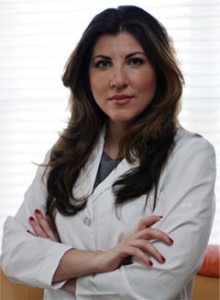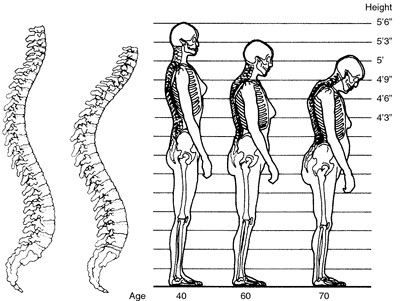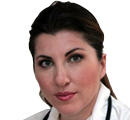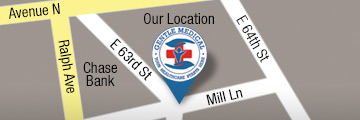What My New Patients Should Know About Osteoporosis (Weak and Brittle Bones)
Posted by admin on July 29th, 2013

“Osteoporosis causes bones to become weak and brittle, making them more prone to fracture. Osteoporosis is a serious disease that can result in serious disability. As you get older, your bones also age, losing mass, especially in women after menopause. Osteoporosis can be halted, and sometimes prevented, by diet and exercise. If you have been told that your bones are weak, we can work together to prevent disease progression and protect you from breaking bones”.
Dr. Bella Zimilevich, MD
What is osteoporosis?
Osteoporosis is a disease of the bones. It is characterized by low bone mass. Bone tissue deteriorates over a long period of time, resulting in bones that are brittle and weak. Because the bones are brittle and weak, they can break easily. Osteoporosis rarely causes symptoms until the disease is well under way, earning it the nickname of “the silent thief”, because it steals bone mass without you knowing it. The spine, hip, wrist and shoulder are the bones that break most commonly in osteoporosis.

What causes osteoporosis?
There is no one single cause of osteoporosis. It can strike men and women of any age, although the condition is more common among older patients. Risk factors for osteoporosis include:
- age– osteoporosis is more common in older individuals
- sex– osteoporosis is more common in women
- menopause– all of us begin to lose bone in our 30s; after menopause, women lose bone at an accelerated rate (up to 2 to 3% per year)
- glucocorticoid drugs– steroid use for longer than 3 months increases the risk of osteoporosis
- malabsorption– medical conditions that inhibit the absorption of nutrients such as calcium and vitamin D can lead to osteoporosis
- medical conditions/medications- these may contribute to, or speed up, bone loss (i.e. thyroid disease, parathyroid or adrenal gland disorders)
- race– Caucasian and Asian women are more prone to developing osteoporosis
- size– individuals who start out with a small frame are more likely to develop osteoporosis (i.e., someone who is 110 pounds with a tiny frame may be at higher risk than someone who is 200 pounds with a large frame)
- lifestyle– a sedentary lifestyle, drinking too much alcohol, cigarette smoking and poor diet may all contribute to the development of osteoporosis
If you parents suffered a hip fracture or a compression fracture of the vertebra, you may be at higher risk for osteoporosis. Loss of height may be an indication of osteoporosis.

What are the symptoms of osteoporosis?
As mentioned, there are often no symptoms of osteoporosis until a fracture occurs. If your osteoporosis is fairly advanced you may experience:
- loss of height over time/stooped posture
- back pain
- bone fracture that occurs after an inconsequential event, such as bending over or sneezing, or a fall that normally would not cause a bone to break
How is osteoporosis diagnosed?
Bone densitometry is a special type of x-ray that can measure the density of bones. Usually only a few bones are checked, such as your wrist, spine and hip. With this test, the density of your bones is compared to others of the same height, weight and age. Sometimes regular x-rays will raise the suspicion that your bones are thinning, which may prompt me to order a bone density test.
What can I expect when I come in for my appointment?
When you come in to see me and you are concerned about osteoporosis, I will start by asking about your past medical history and that of your family, as a family history of osteoporosis is important. I’ll ask you about medications you are taking or have taken in the past (such as steroids) that may have a bearing on the condition. I’ll ask about diet and lifestyle factors that may be of concern. I’ll measure your height to see if it has changed or remained stable. If you are a woman, I’ll determine if you are premenopausal or postmenopausal, as this may put you at higher risk. If you have back pain or have already suffered a fracture, I may want to see old x-rays, and I may order new x-rays for comparison. I will order a bone density test if needed.
We can discuss your personal risk factors for osteoporosis and what you can do to decrease your risk of developing osteoporosis, or prevent it from getting worse and protect you from fractures if you already have it. Exercise, diet, supplementation with calcium and vitamin D, quitting smoking and reducing alcohol intake can all help to arrest the disease. There are medications that can be prescribed if you have osteoporosis to help slow bone loss.
If you have or suspect you may have osteoporosis, you should come in and see me as soon as possible. The sooner we reduce your risk factors, the sooner we can stop the process of bone loss and protect you from suffering a fracture.
Our Location

6301 Mill Lane, Brooklyn, NY 11234.
(718) 942-4600



